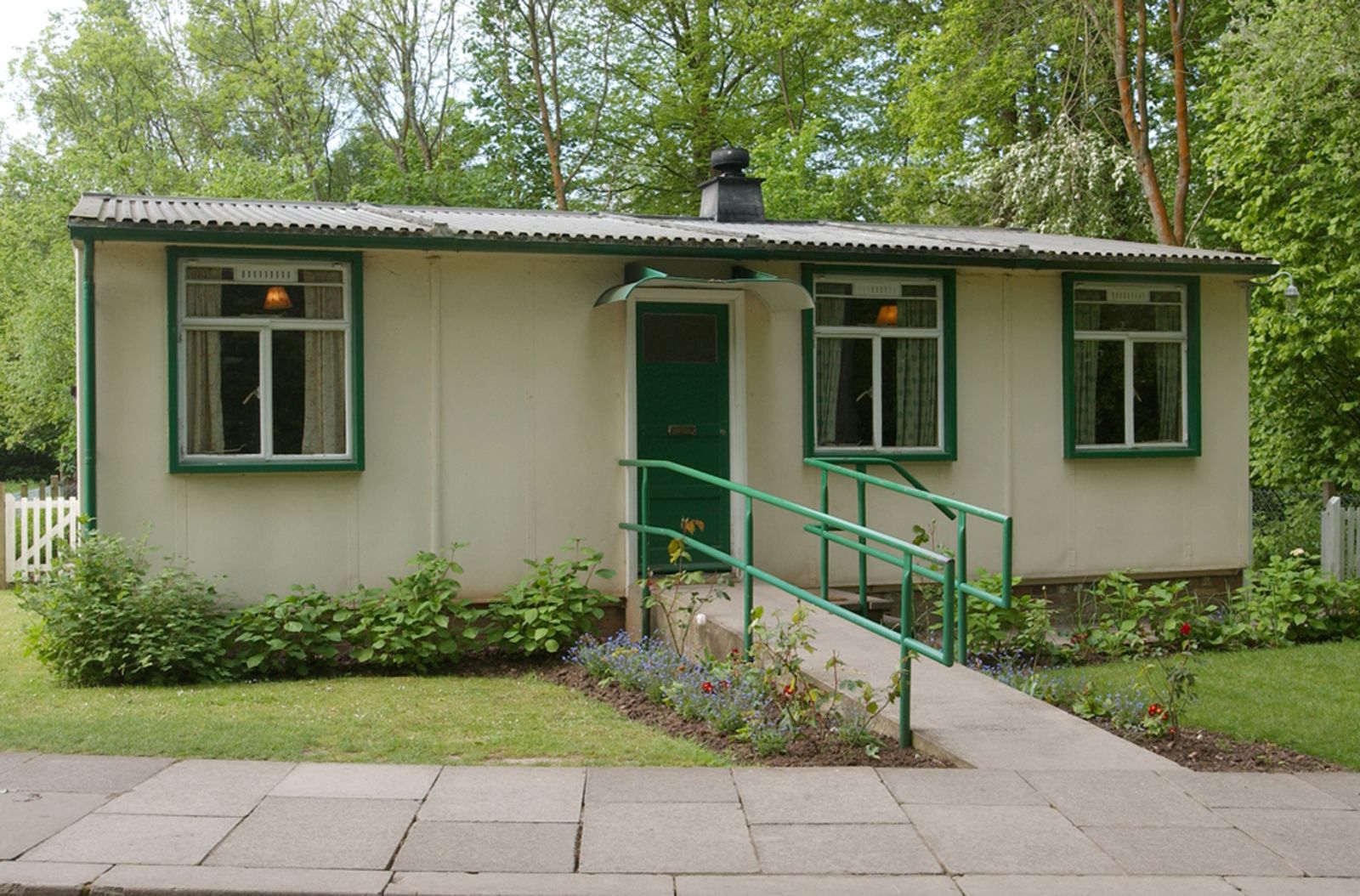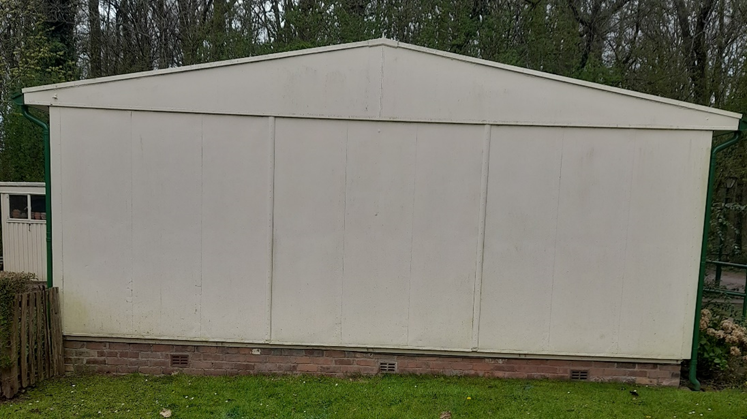Prefab
45

What is this building?
This is a prefabricated bungalow, more commonly known as a prefab.
If you have ever stayed in a caravan or a chalet, you may well be familiar with the setup of this building!
What is meant by the word ‘prefabricated’?
This means that the building was constructed in a factory and moved in individual parts to be assembled at the building site.
Of course, this is in complete contrast today with present day houses when all the materials required are taken to a site and used to build them.
The prefab in St. Fagans National Museum of History is a B2 type of prefab which was made in four parts.
It was constructed in a factory in Hucclecote in Gloucestershire which made aeroplanes during the Second World War.
At one stage, it was claimed, prefabs were produced at the rate of 1 every 12 minutes!
Look at the photo below and you can see the seams where the prefab was joined together.

Where was this prefab originally built?
This prefab was one of forty in Llandinam Crescent, Gabalfa, an area of Cardiff a few miles north of the City Centre.
It was built in 1948, three years after the end of the Second World War. It is now furnished as it would have been in 1950.

Why were prefabs built?
In 1944 Winston Churchill announced the 'Temporary Housing Programme'. Its aim was to provide housing for people who had lost their homes in the bombing raids and homes for key workers in cities.
So there was a need to provide housing for people very quickly. Approximately 7,600 prefabs were built in Wales. They became very popular with young couples setting up their first home together.
What was inside the prefab?
Each prefab had two bedrooms, a living room, entrance hallway, kitchen and bathroom.
All the cupboards and wardrobes were fitted, making effective use of available space. So there was no need for people to buy these items individually which would have added to the cost.
There was hot and cold running water, an electric oven, a fridge, bathtub and toilet. A coal fire with a back boiler was in the living room and in turn this heated the hot water cylinder in the airing cupboard.
The owners of the prefabs called them ‘tin palaces’. Even though they were originally intended to last around ten years, half a century later they were still home to thousands of people.
Over time some items have changed or disappeared like the radiogram. This was a combined record player and radio!

Others have not altered a great deal as this photo of items in the kitchen cupboard below tells us!

When was the prefab moved to the Museum?
The prefab was moved to St Fagans in 2001. This type of prefab (the B2) was once the commonest type built in Britain.
However, it is believed that the one at the Museum is the only surviving example today.
Building facts:
- Original Location: Llandinam Crescent, Gabalfa, Cardiff (Glamorgan)
- Date originally built: 1947
- Furnished: 1950
- Dismantled & rebuilt at St Fagans: 1998
- Opened to the public: 2001
- Visiting information